
“I’m frustrated from browsing irrelevant items”
“I’m tired of going to multiple stores to find my style”
“Shopping online is plain exhausting”
These were just a selection of comments from women about their experience shopping for clothing. Over 58 women replied to our call for feedback on a personalized shopping experience--and the comments began to flood in,
We learned that women are frustrated by the current ecommerce experience, and are looking for more.
The women we interviewed want a seamless, personalized ecommerce experience.
Ecommerce personalization, at its core, is about creating uniquely tailored experiences for customers online. In the early days of the web, it could be as simple as suggesting products customers may like, based on viewing history.
As technology advanced, ecommerce personalization methods became more advanced. With more data points to collect, retailers can use customer data such as browsing history, viewing location, age demographics, or previous purchases to create a unique online shopping experience.
There are more data points than ever for retailers to collect.
But, have you ever received an email that looks like this:
![]()
That’s ecommerce personalization done wrong, and can be damaging to a brand’s reputation.
In this guide, we’ll go over the essential components of ecommerce personalization, from its history to the role of data--and how retailers can stand out from the competition.
Contact us to learn more about personalization solutions for your ecommerce brand.
Personalization is nothing new in retail--store associates are trained to understand shopping preferences in-store and make suggestions based on style, occasion, and demographics.
Imagine a 40 year-old mother walks into a local boutique to purchase a top for work. Based on this information and context (demographics such as age), a store associate might suggest a few button-down shirts. The store associate wouldn’t suggest a crop-top based on the “data” provided and her own knowledge of what is appropriate to wear to the office.
The same analysis happens online, but without the helpful store associate. Data such as psychodemographic information or purchase intent will continue to influence which products shoppers see when shopping online.
In the early days of ecommerce personalization, stores such as Amazon included features such as “if you liked this book” and “customers who bought this book also bought.” Product recommendations were static, based on browsing history.
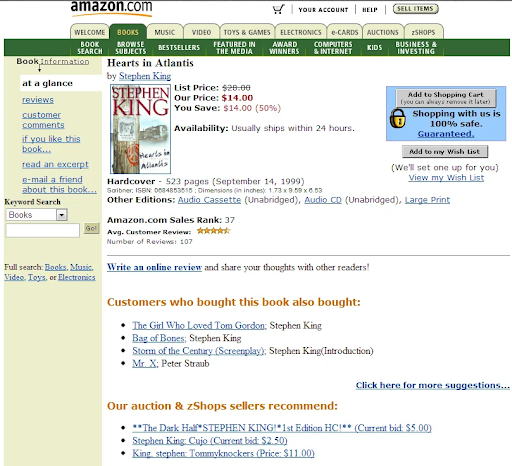
An early example of personalization from Amazon in 2000
Source: wordpress.com
Now, our understanding of personalization has grown to include more than product recommendations and is far more dynamic.
In the 2000s, subscription boxes such as Birchbox brought personalization to customer’s doorsteps. By collecting data on beauty and skin preferences, Birchbox created a personalized, curated box of beauty products that felt unique to each customer.
And now, personalization is an expectation from customers.
The two words are often used interchangeably when discussing how to create tailored experiences.
The goal of personalization and customization is the same: to create a unique, tailored experience for shoppers. But, there is a slight difference:
Customization is done by the shopper.
Customization examples:
Personalization is done by the app or eCommerce platform.
Personalization examples:
Personalization and customization are closely related. With better shopper information (which a shopper would customize), personalization tools can work more effectively.
But, more on that later.
Ecommerce personalization has no shortage of use cases throughout the customer journey. Here are just a few examples:
1. Off-site social re-targeting: A shopper clicks on a pair of wide-leg jeans on an ecommerce website and continues to see the same pair of jeans on Facebook and Instagram. Social re-targeting campaigns can be personalized based on shopper actions (abandoned shopping target, viewed specific products, visited the homepage).

A social re-targeting ad from Glossier,
after visiting their website repeated times
2. Targeted emails: Brands can send specific emails to each shopper, highlighting an individual’s preferred brand or unique promotions.
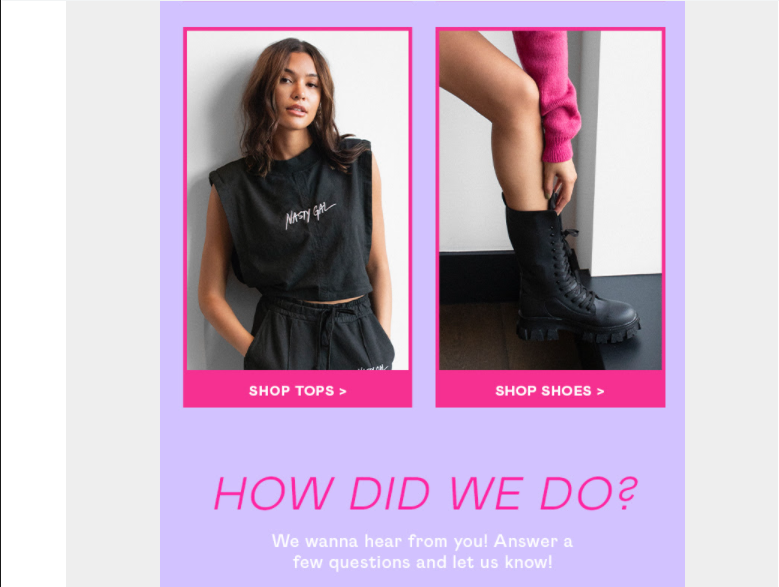
An post-purchase
email from NastyGal
3. Dynamic recommendations: Product recommendations that are curated based on user history, user behavior, and demographics.
YesPlz AI Product Recommendations for Kolon Mall (a leading retailer in Korea)
4. User Generated Content (UGC): When integrated into product details, UGC can be a powerful ecommerce personalization tool.
5. Evergreen shopping: Shoppers return to an ecommerce page and can continue shopping from where they left off. In the example below, products remain in the shopping cart after closing a session. Another example: shoppers can continue browsing products from a previous session.
After returning to Reformation’s website, all cart items are saved automatically
(also called a “persistent cart”).
6. Quizzes and surveys: As mentioned above, customization is a necessity to personalize effectively. By asking shoppers to take short quizzes about style preferences, ecommerce personalization can be even more accurate.
7. Onsite re-targeting: An action triggered by user behavior. For example, when a shopper deletes items from their shopping cart, they may receive messaging on a different page offering a promotion on products.
Bonus: Search personalization:
Ecommerce personalization is moving towards search personalization. As users are becoming more and more frustrated with pre-set text search, retailers are looking to innovate around search by making the search process personalized and visual.
Contact us to learn more about personalization solutions for your ecommerce brand.
Through ecommerce personalization technology, it’s becoming easier to scale personalization methods.
The number one way to ensure your ecommerce personalization is scalable? By making sure you’re collecting good data.
Your data should be:
1. Clean: Free from human errors, such as mis-typing numbers
2. Complete: There shouldn’t be any missing input data or half-finished data sets
Do you remember this example?
![]()
Firstname% is an example of incomplete data that slipped through, and became a badly personalized email.
Remember: the more accurate and complete your data, the easier it is to launch a scalable ecommerce personalization solution
When ecommerce personalization is done well, it can overcome one of the biggest challenges to ecommerce shopping: fatigue and frustration. Shopping online can be overwhelming and depersonalized, especially when shoppers are forced to click through hundreds of products.
Ecommerce personalization can spark joy and engage shoppers, creating a unique bond between the brand and customer.
And, of course, it can lead to increased sales, higher rates of customer loyalty and retention, and improved Net Promoter Scores (NPS). In other words, good ecommerce personalization leads to more revenue and more customers.
But, when done wrong, it can be plain annoying or even creepy. An easy-to-make mistake, such as calling a shopper by the wrong name, or showing shoppers too many targeted ads can lead to frustration and a negative perception of the brand.
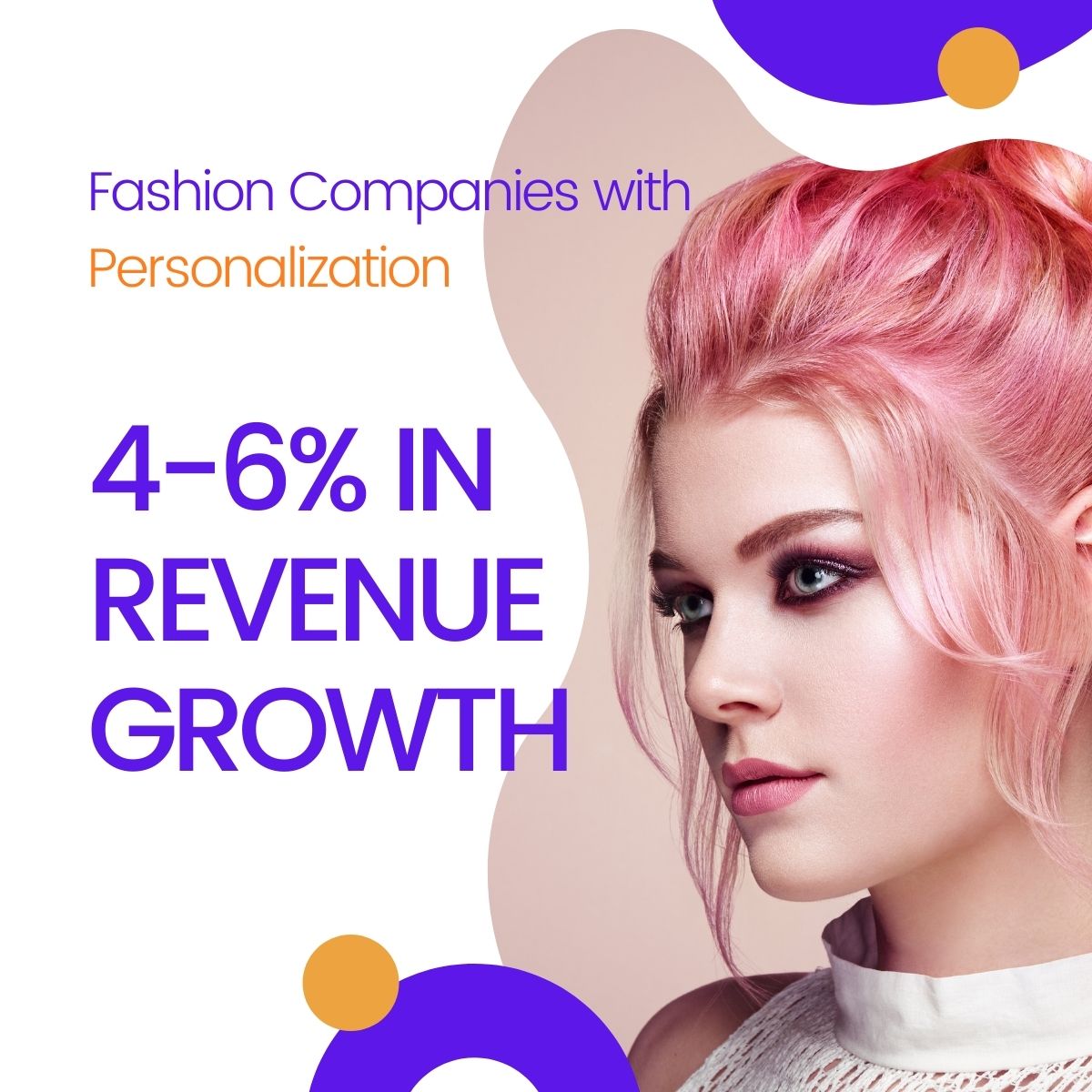
According to a McKinsey 2021 report, fashion companies
that implemented personalization saw impactful results.
Ecommerce personalization is also a way to stand out from competitors. By delighting customers, brands can stay top-of-mind when customers shop.
In order to create a tailored, curated experience, ecommerce personalization tools rely on meta data such as product title, description, and brands based on users’ input.
There are two ways to filter information:
1. Collaborative filtering takes user’s historical clicks to make product recommendations. It tends to use the profile of similar users to make predictions of which product to show. “Similar shoppers also liked…” would be an example of collaborative filtering.
The cold-start problem is a challenge in collaborative filtering. When a new item is introduced, collaborative filtering methods don’t have any past data, user reviews, or information to pull from, and won’t recommend new products because of this.
In ecommerce, thousands of SKUs are added everyday. It’s a necessity that shoppers see new products in their recommendations, or else those products will receive less sales.
2. Content-based filtering makes recommendations based on the key defined features that are pulled from the content. For example, if a user views a low-cut, form-fitted dress, defined features such as neckline, fit of the dress, and material of the dress, would be used to make recommendations.
But, that’s only the beginning of the story. A strong ecommerce personalization filtering system can analyze: shopper intent (a shopper that clicks on a winter jacket will be interested in other winter season items), browsing history, and product attributes.
What’s at the core of these complex filtering systems?
Data.
In order to initiate ecommerce personalization, retailers need to collect and analyze data.
And as you can imagine, there are thousands of data points to collect--and combined with human error and outdated systems, it’s really easy to make a mistake when collecting or analyzing data.
Text-based metadata can become overly messy, as retailers and suppliers are constantly updating product information and tags--what happens if someone mistypes a product detail?
Visual search can be helpful in solving the problem of product tagging. Through artificial intelligence powered-visual search, vital information such as fit or silhouette can be extracted and added to the personalization process.
For example, at YesPlz AI, our product recommendation engine can identify and tag key product attributes (product type, color, style) to suggest similar items that fit the customer profile and needs. The YesPlz product recommendation engine uses visual search and artificial intelligence to quickly and accurately identify the attributes that matter most to customers: fit, silhouette, and style.
YesPlz Product Recommendations:
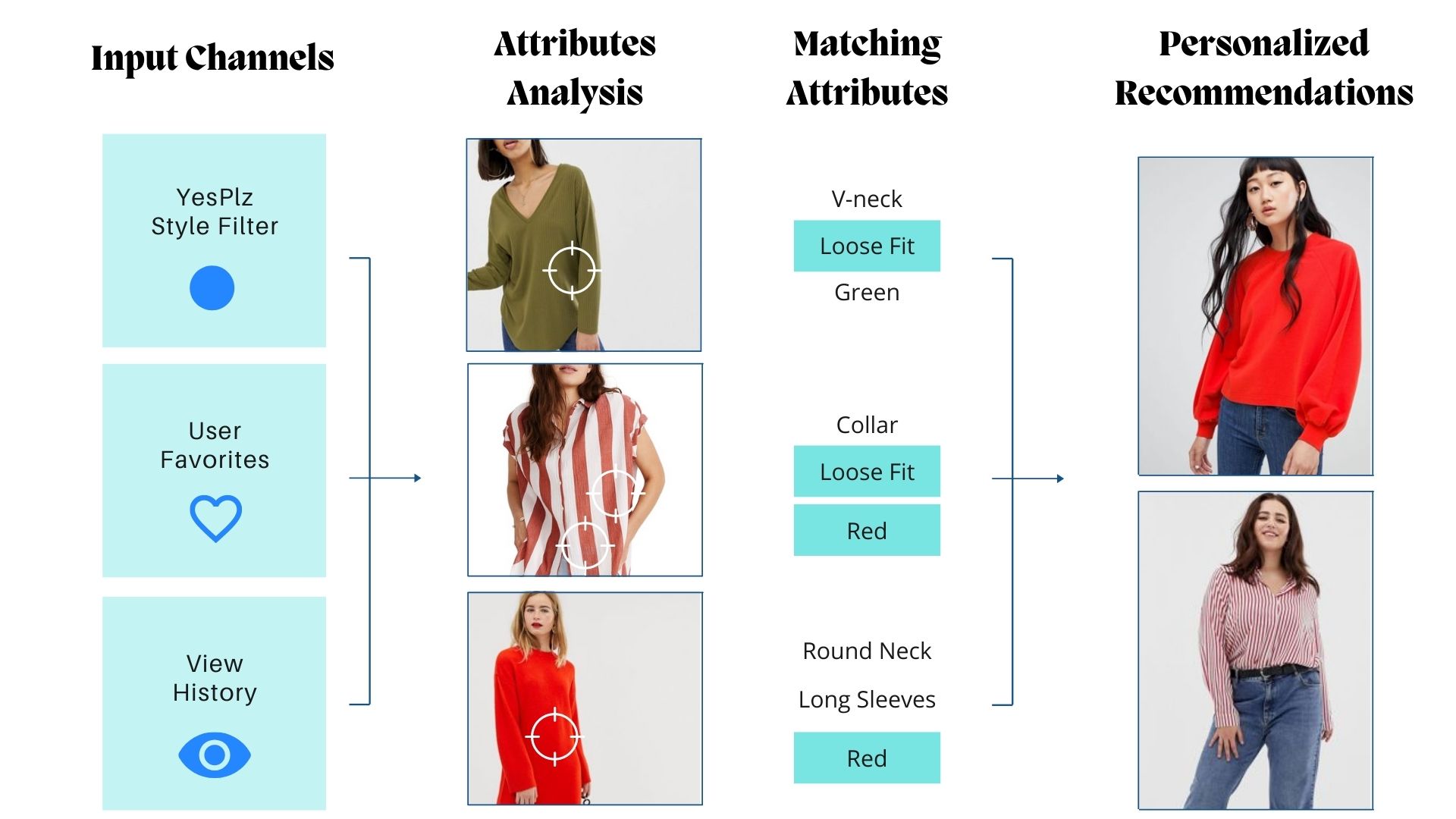
Because, at the end of the day, it’s always about the customer.
And when it comes to ecommerce personalization, our research shows that silhouette is the most important attribute to customers.
There isn’t a helpful, knowledgeable sales associate to guide ecommerce shoppers through their journey. A sales associate in-store can quickly analyze and make decisions based on intrinsic connections (a 6’ foot tall woman isn’t interested in seeing petite sized clothing).
That innate common sense is lost online. Through artificial intelligence, ecommerce brands can understand customers the same way that a sales associate can (and even better).
Through images or text, AI can quickly analyze and extract key attributes or metadata from a product.
A human, on the other hand, needs to manually analyze and match relevant products to shoppers. AI can process and analyze thousands of products in seconds, making ecommerce personalization scalable.
The biggest strength of AI in ecommerce personalization (whether through collaborative or content based filtering) is the connections it can make. AI can draw connections between products and the shopper, accurately predicting other products for the shopper.
When an AI algorithm is well-trained in fashion and shopper preferences, the results can be powerful and delightful.
For example, here’s how the YesPlz AI customized personalization system works:
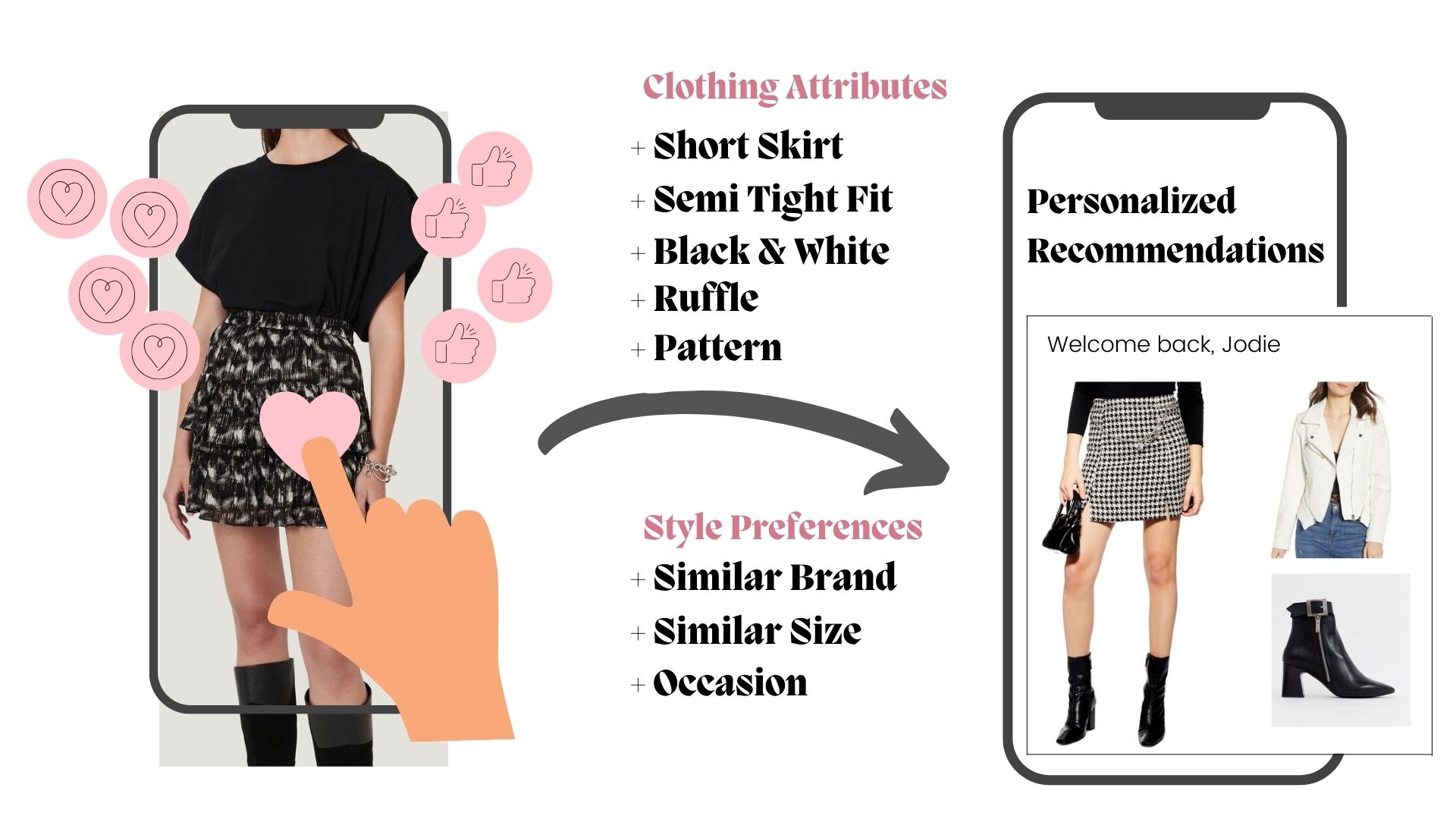
How it works: A user favorites her preferred styles, brands, sizes, and clothing attributes. In return, she receives customized, curated style picks. Then, through a dynamic landing page that changes based on user behavior and preferences, the experience is personalized even further.
Although there are infinite possibilities for ecommerce personalization, there’s one point to remember: ecommerce personalization doesn’t need to be difficult.
The implementation process doesn’t need to be complex. There are personalization tools that can work with your company’s already existing technology and data, and are easy to implement with impactful results.
Fashion artificial intelligence technology can transform the ecommerce experience for your shoppers, making search and discovery delightful for them.
Through YesPlz AI product recommendations and visual search filters, your ecommerce brand can personalize the shopping experience, using powerful AI.
Contact us to learn more about personalization solutions for your ecommerce brand.

Written by YesPlz.AI
We build the next gen visual search & recommendation for online fashion retailers
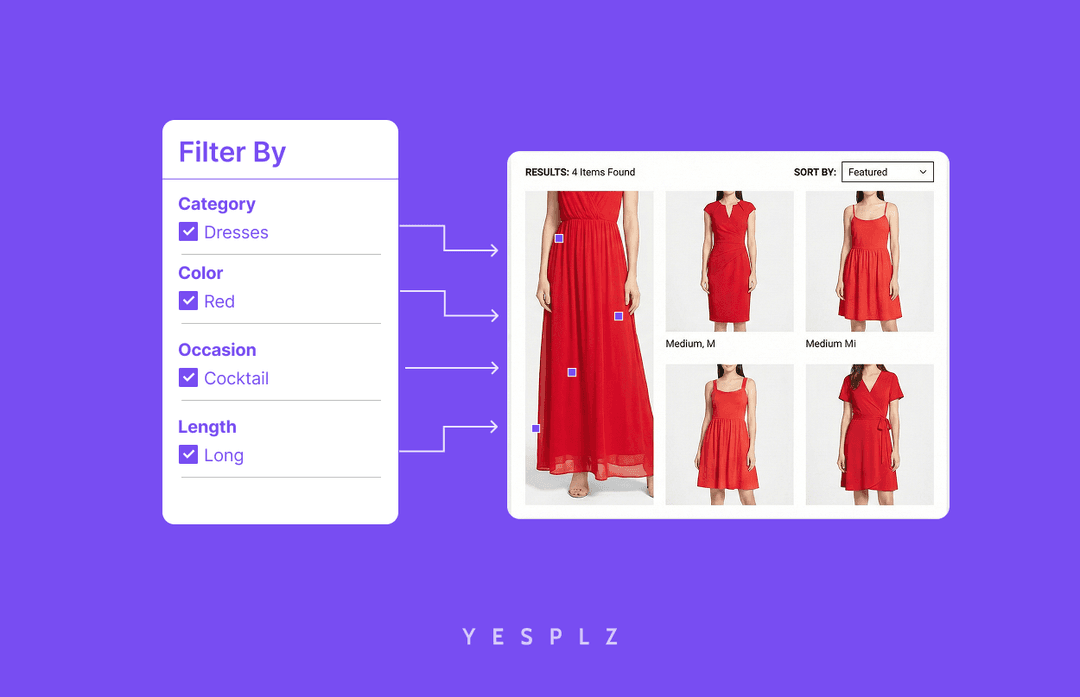
Stop losing sales to poor product filtering. Discover how AI simplifies creating Shopify filters, saving you 25-50 hours per 100 products.
by YesPlz.AI
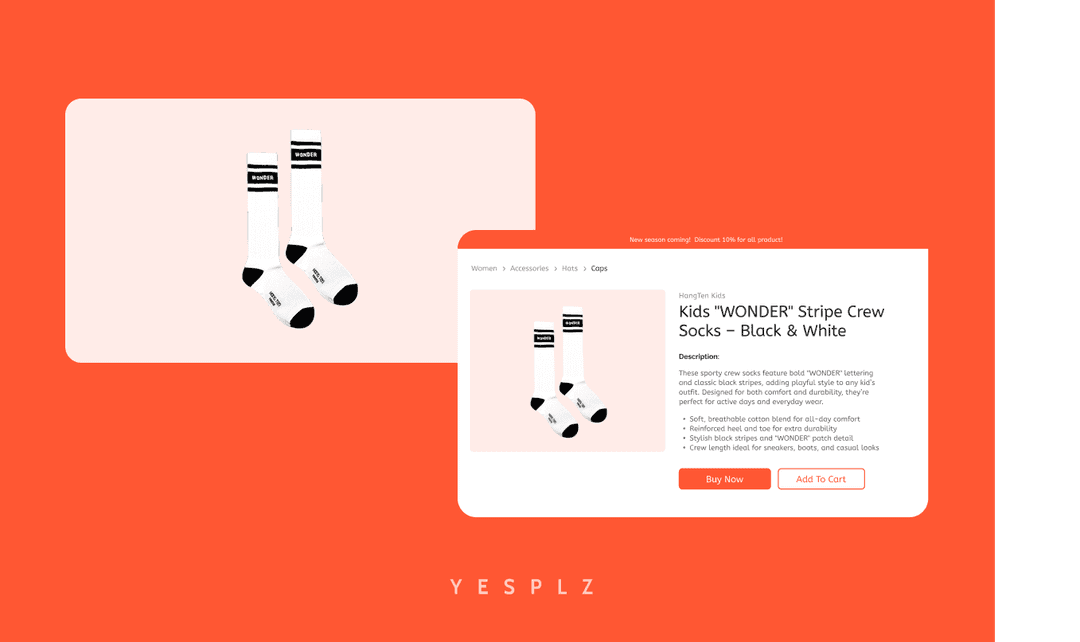
Automate Shopify product pages and cut 50–100 hours of manual work. AI generates product titles, descriptions, and metadata instantly from product images.
by YesPlz.AI